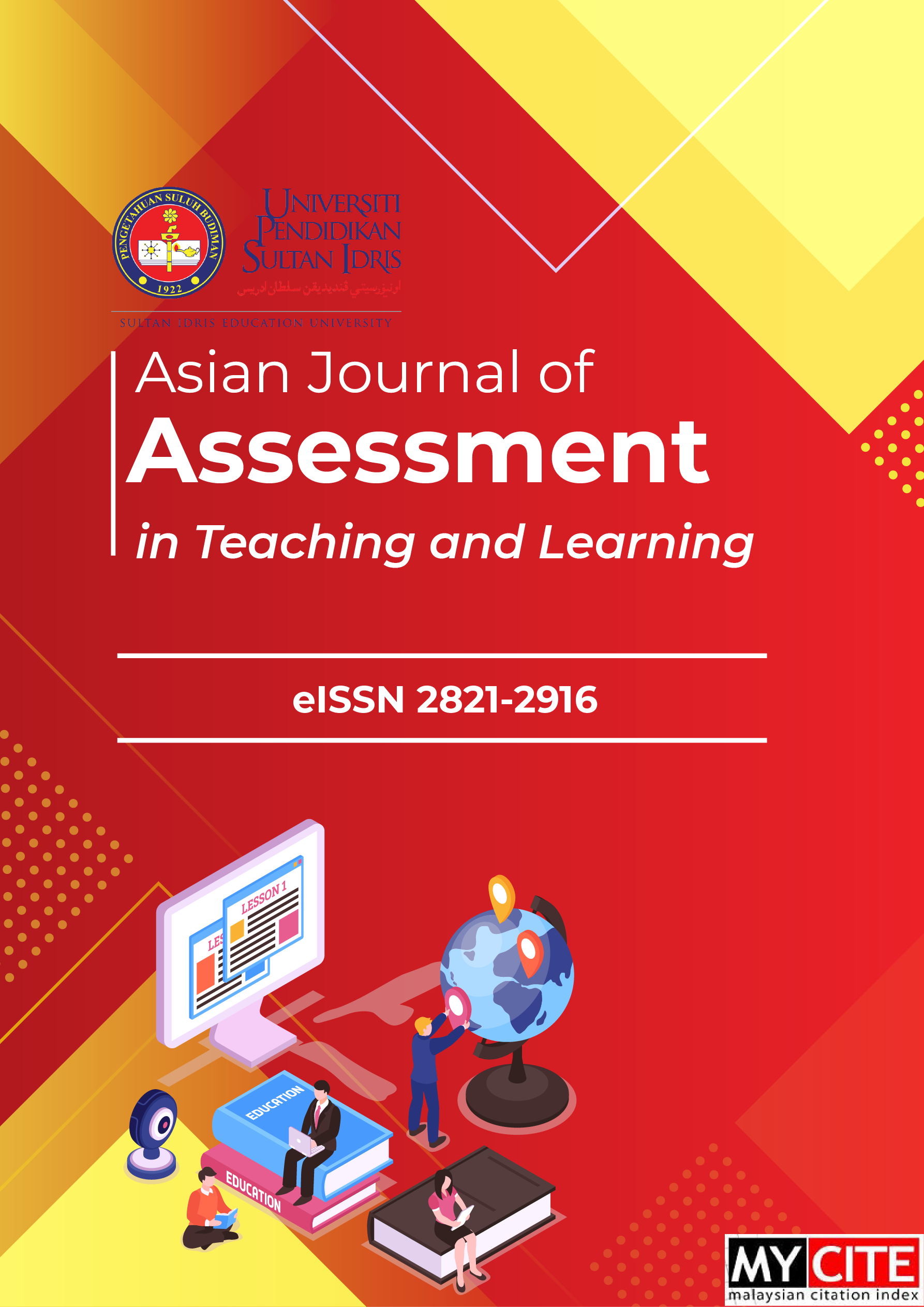Geogebra Supported Multiple Representations to Enhance Representational Skills in Calculus
DOI:
https://doi.org/10.37134/ajatel.vol12.2.10.2022Keywords:
GeoGebra, Multiple Representations, Representation Implementation, SOLO Taxonomy, DeFT FrameworkAbstract
The advents of multiple interface technologies have made mathematical concepts accessible to students. However, the integration of these technologies into mathematics classroom in Ethiopian universities is at its infant stage. The primary focus of this study was designed to delineate the potential impact of GeoGebra supported multiple representations on students’ abilities and levels of representations implementation in calculus learning. Mixed method with pretest and posttest quasi experimental design of non-equivalent groups was implemented. Three intact groups of first year first semester of social science students were formed. The groups were taught with GeoGebra supported multiple representations (MRT), multiple representations (MR) and conventional (CG) approaches. Pretest and posttest on representation implementation were administered. Analysis of Covariance (ANCOVA) and structure of observed learning outcome (SOLO) model were used to compare and level students’ score. The ANCOVA result reveals that there was no significant difference among the groups on the adjusted mean of the posttest after controlling the pretest (F (2, 160) = .94, P = .391, Partial =.012). According to the SOLO model, majority of students of each group was in the multi-structural level (87% of the MRT, 61% of the MR and 70% of the CG).This result informs that students failed to get benefit from the synergetic power of multiple representations. Interview result confirmed that representations implementation is characterized by nature of the problem and solution purpose. It is recommended that further research is required with different participants to generalize to the entire population.
Downloads
References
Adu-Gyamfi K., Bossé, M. J., & Chandler, K. (2015). Situating Student Errors: Linguistic-to-Algebra Translation Errors. International Journal for Mathematics Teaching & Learning, 1-29.
Adu‐Gyamfi K., Stiff, L. V., & Bossé, M. J. (2012). Lost in translation: Examining translation errors associated with mathematical representations. School Science and Mathematics, 112(3), 159-170.
Afriyani D., Sa’dijah, C., Subanji, S., & Muksar, M. (2018). Characteristics of Students’ Mathematical Understanding in Solving Multiple Representation Task based on Solo Taxonomy. International Electronic Journal of Mathematics Education, 13(3), 281-287.
Ainsworth S. (1999). The functions of multiple representations. Computers & education, 33(2-3), 131-152.
Ainsworth S. (2006). DeFT: A conceptual framework for considering learning with multiple representations. Learning and instruction, 16(3), 183-198.
Ainsworth S. (2014). 20—The Multiple Representation Principle in Multimedia Learning. The Cambridge handbook of multimedia learning, 464.
Arifah A. (2020). The Potential of GeoGebra Exploration in Supporting Multiple Representation Ability. Paper presented at the Journal of Physics: Conference Series.
Berthold K. (2006). Learning from Worked-out Examples: Multiple Representations, an Integration Help, and Self-explanation Prompts All Foster Understanding.
Biggs J., & Collis, K. (1982). The psychological structure of creative writing. Australian Journal of Education, 26(1), 59-70.
Bossé M. J., Adu-Gyamfi, K., & Cheetham, M. R. (2011). Assessing the difficulty of mathematical translations: Synthesizing the literature and novel findings. International Electronic Journal of Mathematics Education, 6(3), 113-133.
Bruner J. S. (1966). Toward a theory of instruction (Vol. 59): Harvard University Press.
Chang B. L., Cromley, J. G., & Tran, N. (2016). Coordinating multiple representations in a reform calculus textbook. International Journal of Science and Mathematics Education, 14(8), 1475-1497.
Clark J. M., & Paivio, A. (1991). Dual coding theory and education. Educational Psychology Review, 3(3), 149-210.
Fonger N. L. (2019). Meaningfulness in representational fluency: An analytic lens for students’ creations, interpretations, and connections. The Journal of Mathematical Behavior, 54, 100678.
Fonger N. L., Davis, J. D., & Rohwer, M. L. (2018). Instructional Supports for Representational Fluency in Solving Linear Equations with Computer Algebra Systems and Paper‐and‐Pencil. School Science and Mathematics, 118(1-2), 30-42.
Johar R., & Lubis, K. R. (2018). The analysis of students’ mathematical representation errors in solving word problem related to graph. Jurnal Riset Pendidikan Matematika, 5(1), 96-107.
McHugh M. L. (2012). Interrater reliability: the kappa statistic. Biochemia medica, 22(3), 276-282.
Meltzer D. E. (2005). Relation between students’ problem-solving performance and representational format. American journal of physics, 73(5), 463-478.
Nurrahmawati N., Sa’dijah, C., Sudirman, S., & Muksa, M. (2019). Multiple representations’ ability in solving word problem. Int J Recent Technol Eng, 8(1C2), 737-745.
Pallant J. (2013). SPSS survival manual: McGraw-Hill Education (UK).
Pedersen M. K., Bach, C. C., Gregersen, R. M., Højsted, I. H., & Jankvist, U. T. (2021). Mathematical Representation Competency in Relation to Use of Digital Technology and Task Design—A Literature Review. Mathematics, 9(4), 444.
Rahmawati D. (2019). Translation Between Mathematical Representation: How Students Unpack Source Representation? Matematika dan Pembelajaran, 7(1), 50-64.
Rahmawati D., Purwantoa, S., Hidayanto, E., & Anwar, R. B. (2017). Process of Mathematical Representation Translation from Verbal into Graphic. IEJME-Mathematics Education.
Rau M. A. (2017). Conditions for the effectiveness of multiple visual representations in enhancing STEM learning. Educational Psychology Review, 29(4), 717-761.
Samsuddin A., & Retnawati, H. (2018). Mathematical representation: the roles, challenges and implication on instruction. Paper presented at the Journal of Physics: Conference Series.
Van Meter P., List, A., Lombardi, D., & Kendeou, P. (2020). Handbook of learning from multiple representations and perspectives: Routledge.
Downloads
Published
How to Cite
Issue
Section
License
Copyright (c) 2022 Gebru Arefaine Nigusse, Kassa Michael

This work is licensed under a Creative Commons Attribution-NonCommercial-ShareAlike 4.0 International License.





